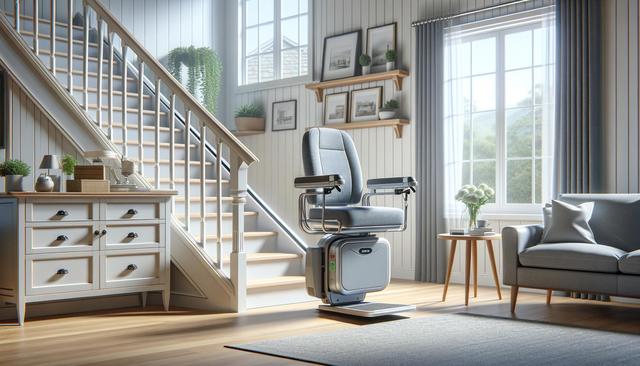Understanding the Purpose and Functionality of Stair Lifts
Stair lifts serve as practical solutions for individuals who experience difficulty climbing stairs due to age-related mobility issues. These devices consist of a motorized chair or platform that moves along a rail mounted to the staircase, allowing users to ascend or descend safely. As more seniors choose to age in place, stair lifts are becoming an essential home modification that supports safer daily living. The technology behind modern stair lifts has evolved to offer smooth, quiet operation, and user-friendly controls, making them a reliable addition to any home with multiple levels.
For seniors, the risk of falling on stairs is a significant concern. Stair lifts help eliminate this risk by providing a secure and stable ride between floors. This not only helps prevent accidents but also reduces the mental stress associated with navigating stairs. Families and caregivers often feel more at ease knowing that their loved ones can safely move around their home without assistance.
Key Features That Enhance Safety and Comfort
Modern stair lifts are designed with a variety of safety features that make them suitable for seniors with varying levels of mobility. These features are essential in promoting both physical safety and peace of mind. Some commonly included features are:
- Seat belts and armrests for added stability while riding
- Swivel seats that make getting on and off the lift easier and safer
- Obstruction sensors that stop the lift if something is in its path
- Battery backup systems for use during power outages
These safety components ensure that stair lifts function reliably in real-life scenarios, where unexpected obstacles or power interruptions can occur. Additionally, the comfort of the user is also considered in modern stair lift designs. Padded seating, customizable seat heights, and adjustable footrests contribute to an ergonomic experience tailored to the needs of the individual user.
Benefits Beyond Physical Mobility
While the primary advantage of a stair lift is physical mobility, the psychological benefits are equally important. Seniors often face emotional challenges when they feel confined to one floor of their home or become dependent on others for movement. Installing a stair lift provides a renewed sense of independence, which can positively impact mental well-being and overall quality of life.
Furthermore, stair lifts can help delay or even eliminate the need for relocation to a single-story home or assisted living facility. This not only preserves familiar surroundings and routines but also can result in financial savings over time. Families also benefit, as the stress and time involved in providing daily assistance with stairs are significantly reduced.
Considerations Before Installation
Choosing a stair lift involves several considerations to ensure it meets the specific needs of the user and the layout of the home. Key factors include:
- Type of staircase – straight, curved, or outdoor stairs require different rail configurations
- Weight capacity – ensuring the lift can safely support the user’s weight
- Space availability – making sure there is adequate room at the top and bottom of the stairs for safe dismount
- User ability – evaluating how easily the person can operate the controls and sit/stand from the lift
Professional installers typically assess these factors during a home evaluation to recommend the most suitable model. Customization options are often available to adapt the stair lift to both the user’s needs and the home’s architectural design. This tailored approach ensures a more effective and comfortable solution.
Maintenance and Long-Term Use
Stair lifts are designed for durability, but like any mechanical device, they require regular maintenance to function optimally over time. Routine checks, often provided by the manufacturer or supplier, help identify wear and tear before it becomes a safety issue. Common maintenance tasks include:
- Cleaning the rail and ensuring it is free from debris
- Checking the battery and replacing it when necessary
- Inspecting the seat, armrests, and footrest for stability
- Testing the remote controls and safety sensors
Many providers offer service plans that include annual inspections and emergency repairs, which can add peace of mind for users and their families. With proper care, stair lifts can offer many years of reliable service, reinforcing their value as a long-term investment in home safety.
Conclusion: Supporting Independence with Safe Mobility
For seniors committed to living safely and comfortably in their own homes, stair lifts represent a thoughtful and effective solution. These devices address not only the physical challenges of climbing stairs but also the emotional desire for independence and self-reliance. By choosing to install a stair lift, families can support their loved ones in maintaining a fulfilling lifestyle in familiar surroundings. With a variety of models and features available, stair lifts are increasingly recognized as a practical addition to homes seeking to enhance safety and quality of life for older adults.




Leave a Reply